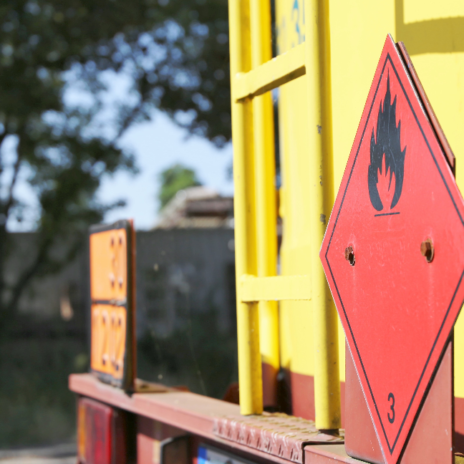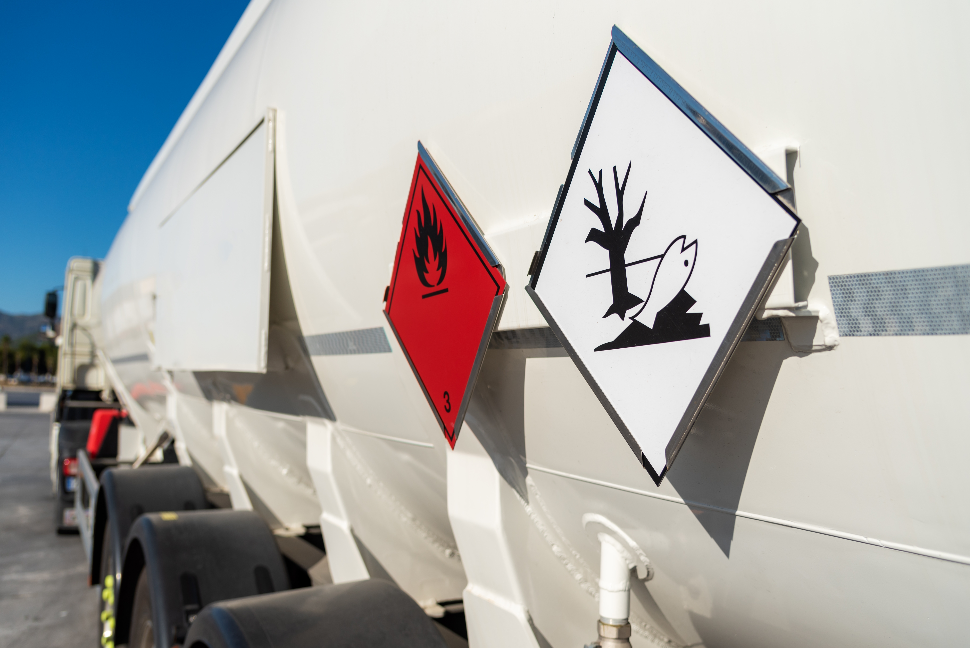
Transporting hazardous goods: What you need to know
If you transport hazardous goods by air, sea, road, rail or waterway, you must pack and transport them according to international regulations.
No matter the mode of transportation, moving these goods from point A to point B comes with many risks. There is a possibility of a serious incident, such as spillage of the goods, which can lead to dangerous hazards such as fires, explosions, traffic accidents or chemical burns.
When it comes to the transportation of hazardous goods, human error is to blame for one-third of accidents. That’s why it’s critical that those who transport these dangerous consignments are fully aware of current legislation.
In this blog post, we outline what needs to be considered in hazardous goods transportation.
What is classed as hazardous goods?
The term ‘hazardous goods’ refers to any substance or material that, if not properly controlled
and regulated, is capable of posing an unreasonable risk to health, safety and property when transported in commerce.
They can range from pure chemicals, mixtures of substances or manufactured products that can pose a risk to people, animals or the environment.
What are the regulations?
Given the sensitivity and risk factors, specific precautions need to be taken when transporting hazardous goods.
According to UK legislation, these materials must be properly packaged, transported in a suitable vehicle, show particular details, and follow strict loading and unloading procedures.
Road vehicles responsible for the transportation of hazardous goods must carry specified safety equipment, such as fire extinguishers. They will also require a qualified dangerous goods safety adviser on board who is trained in both vehicle operation and what to do in the event of an accident. ADR training is required for all drivers who transport hazardous materials. More precautions will need to be taken depending on the risk level of a specific package.
The UN Model Regulations has created a classification system to define the different levels of risk. In order for all organisations in the supply chain, including the emergency authorities, to know and appreciate just how serious the threat could be, you will need to ensure that hazardous materials are categorised correctly if you are involved in their processing, packing, or shipping.

Classifying hazardous goods
The UN categorises hazardous goods as follows:
| UN Class | Hazardous goods |
| 1 | Explosives |
| 2 | Gases |
| 3 | Flammable liquids |
| 4 | Flammable solids |
| 5 | Oxidisers and organic peroxides |
| 6 | Toxic and infectious substances |
| 7 | Radioactive material |
| 8 | Corrosive substances |
| 9 | Miscellaneous dangerous substances |
After determining the applicable category, the person or business shipping the goods is responsible for classifying and packaging them correctly.
How can hazardous goods be transported?
Transportation may be undertaken via land, air, sea, rail or waterways.
If you are shipping goods by sea or waterways, you will need to follow practices set out by the International Martine Organisation, by air, the regulations of the International Air Transport Association, by rail, the Intergovernmental Organisation for International Carriage by Rail, and by road, the regulations set out by the UN and specific country where the goods are being transported.
How to prepare for transportation
When transporting goods, each consignment must be accompanied by a transport document declaring the description and nature of the goods.
Documentation must be completed by the consigner, be applicable to the form of transport that you plan to use and be in accordance with the specifications set out by UK and UN regulations.
If you require further advice, guidance or more information on hazardous goods transportation, get in touch with one of our qualified experts today.
